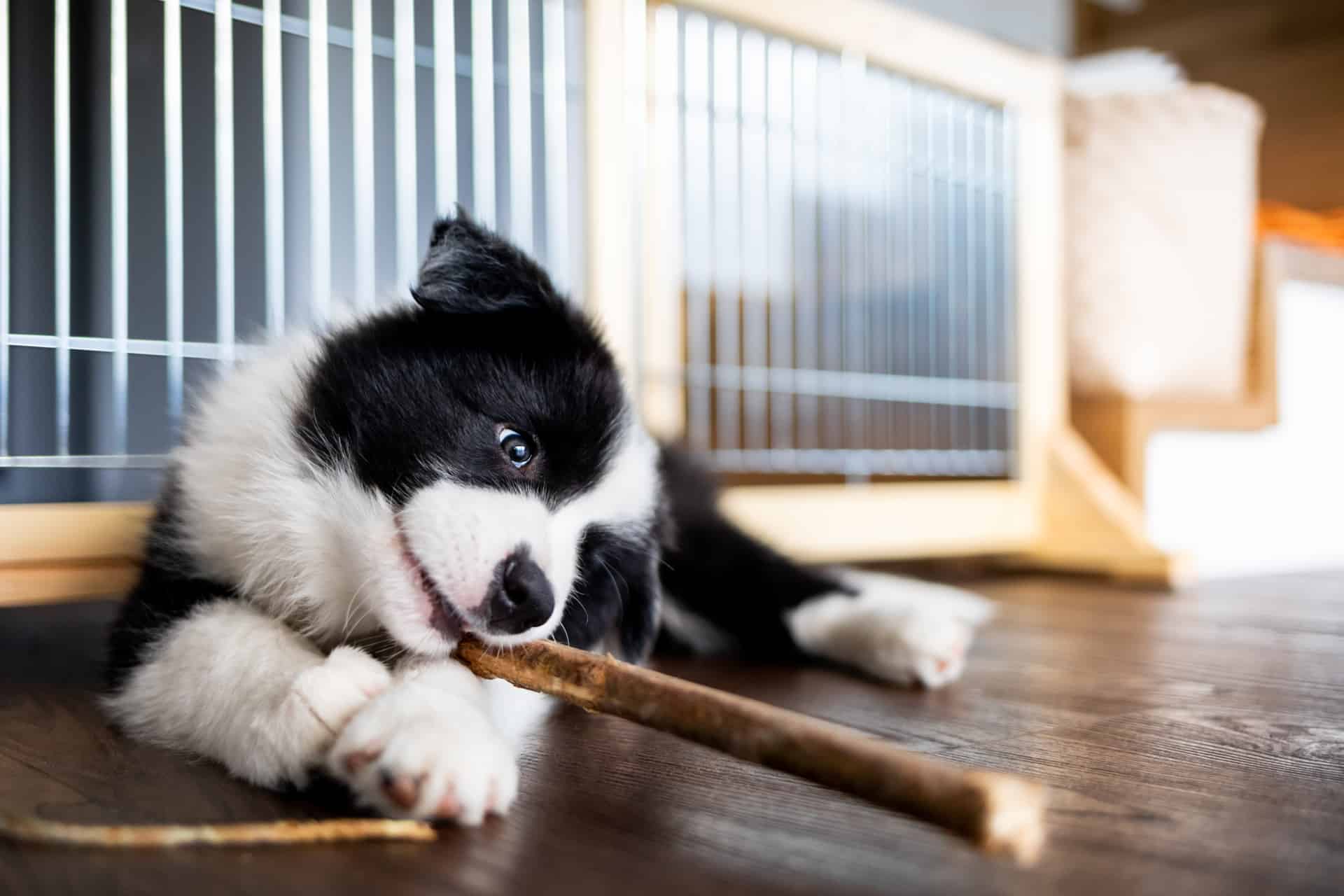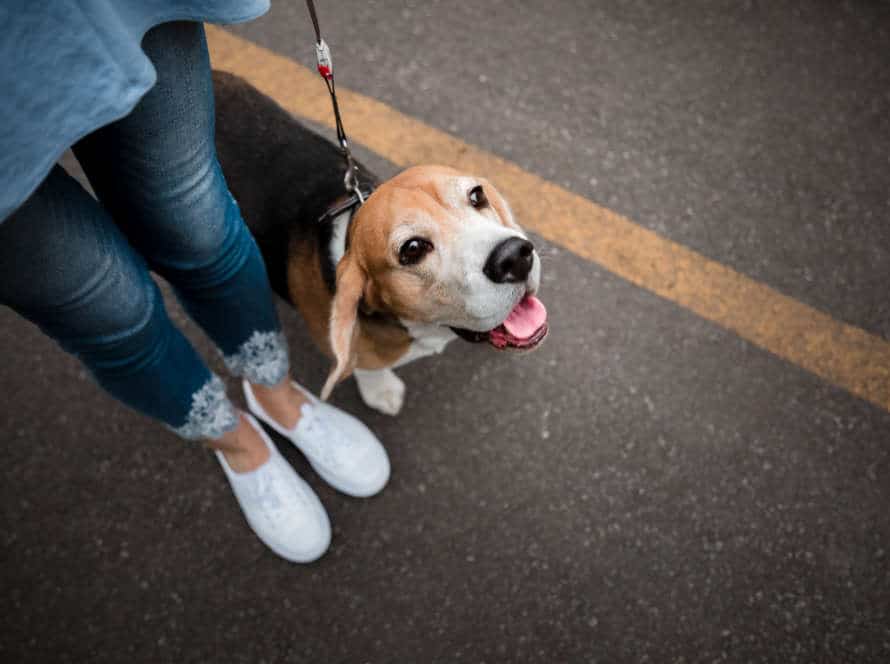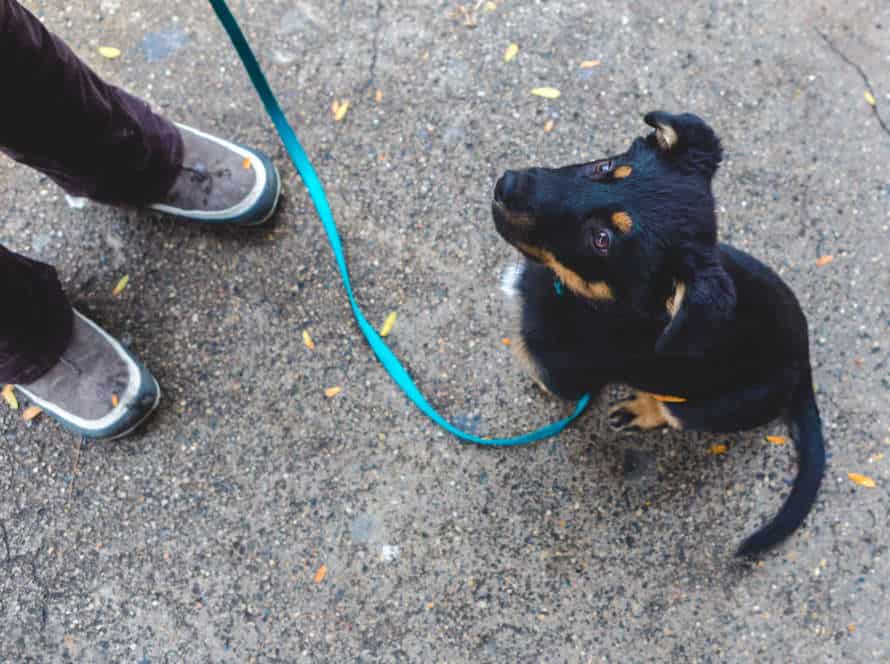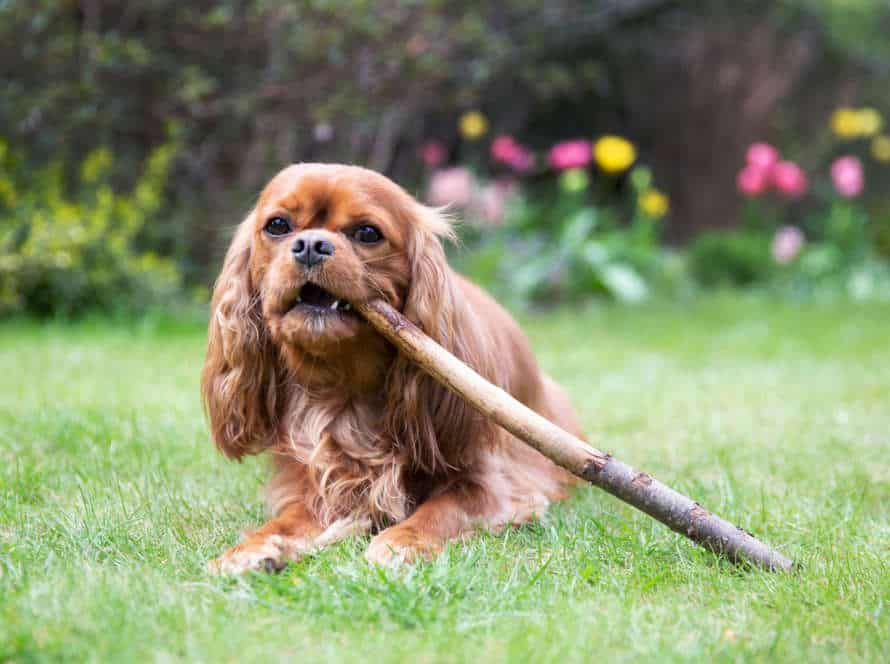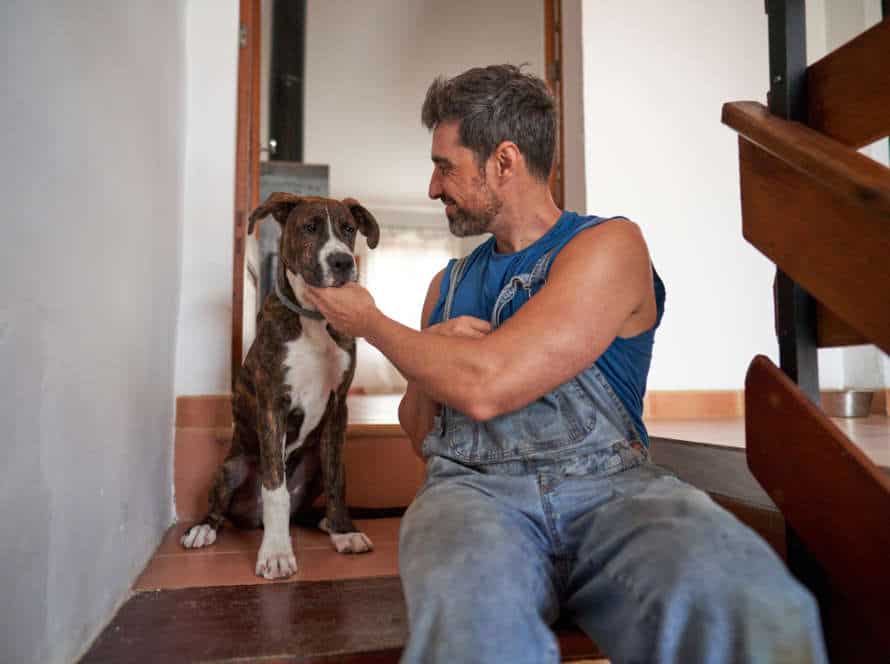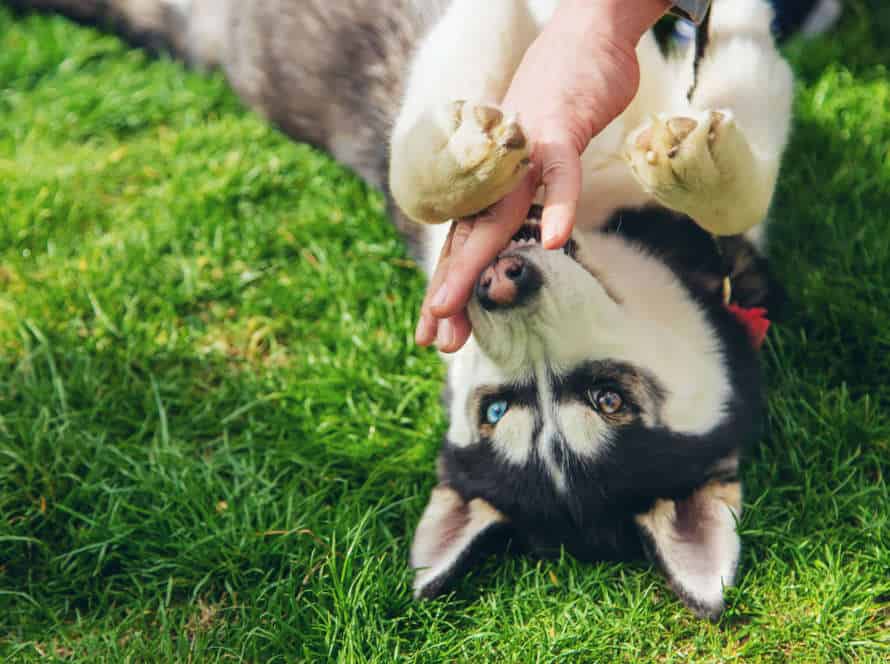The Role of Toys and Chews in Redirecting Puppy Biting
Puppy biting is a natural behavior that helps pups explore and develop their teeth and jaws. But, too much biting can be destructive and painful, especially for pet owners. Toys and chews can help redirect puppy biting and provide alternatives to household items and furniture.
Here’s some tips to pick the right toys and chews:
- Get durable, non-toxic puppy-specific toys.
- Get toys with different textures, sizes and shapes.
- Give your pup soft and hard chews to help with teething and dental health.
- Change up your pup’s toys and chews to stop boredom and get them exploring.
With consistent use, these toys and chews will show your pup what’s OK to chew, resulting in better behavior and a happier home.
Pro tip: Always watch your pup when they play with toys and chews to stay safe and avoid choking hazards.
Why Puppies Bite
Puppies bite for many reasons – teething, exploring, or playing. To fix this, we must understand why. Toys and chews can help. They can help redirect the puppy’s biting behavior. Let’s see how they work.
Understanding Puppy Teething Pain
Puppy teething pain can lead to biting and chewing. This is why it’s important to know why puppies bite and the role of toys and chews in redirecting puppy biting.
Puppies start teething at 3-4 months old. This continues until they are 7 months old. During this time, their gums hurt. So, to ease the discomfort, they may chew and bite on various objects.
This behavior is not meant to be aggressive or harmfully. It’s just their way to cope with the teething pain.
Toys and chews are very useful when redirecting puppy biting. Give them chew toys like Kongs, rubber toys, and dental chews. This will help soothe their gums.
You can also use positive reinforcement to redirect biting. Give them treats or praise when they use toys and chews for biting instead of your skin.
By using the right and consistent training techniques, you can help your puppy manage their teething and create good biting habits.
Behavioral Reasons for Puppy Biting
Puppy biting is common. Reasons include teething, playfulness, and socializing. Toys and chews can help. Here’s how:
- Teething: Growing teeth can hurt. Toys and chews soothe the pain and help puppies chew in a healthy way.
- Playfulness: Puppies may bite and nip during playtime. Toys and chews can be used to redirect the energy and promote good play.
- Socializing: Puppies not socialized properly can be fearful and aggressive. Toys and chews can be used to teach them the right social skills.
Importance of Redirecting Puppy Biting
Puppies explore the world using their mouths. Biting is a natural behavior for them. Redirecting puppy biting is essential. Toys and chews play a major role. They offer appropriate items for the pup to bite and chew on.
Here’s how it works: When a pup bites, redirect their attention to a toy or chew they are allowed to bite. Replace the unwanted biting with desired behavior. Use positive reinforcement. Praise and reward the pup when they bite toys and chews. Redirecting puppy biting teaches them proper behavior and helps soothe teething discomfort.
Pro Tip: Supervise the pup when giving them toys and chews. Avoid choking hazards or accidental ingestion.
Types of Toys and Chews for Redirecting Puppy Biting
Puppies love to check out new stuff by mouthing and biting. To help them with this, toys and chews are a great solution. They give mental stimulation and a safe way for puppies to chew and bite. This article dives into the different kinds of toys and chews that can redirect puppy biting.
Rope Toys
Rope toys are a great way to redirect puppy biting. They’re safe and durable. Plus, puppies love them! You can find different types of rope toys in the market. Knotted ropes are ideal for teething puppies. Braided ropes are perfect for playing fetch and tug-of-war. Twisted ropes are great for aggressive chewers.
Toys and chews are essential for redirecting puppy biting. They help develop good chewing habits. They relieve teething pain. Plus, they prevent destructive behavior. By providing the right toy or chew, you can keep your puppy away from valuable items and onto something more productive and safe.
Pro Tip: Always supervise your puppy during playtime. Inspect their toys regularly for signs of wear and tear. This way, you can avoid potential hazards.
Chew Toys
Chew toys are key for guiding puppy biting behavior, and keeping your furry mate amused. There are many varieties of chews and toys on the market, designed to meet your pup’s specific developmental stage.
- Rubber chews: Perfect for puppies who are teething, their rubbery texture helps soothe their tender gums.
- Rope toys: Durable and great for interactive playtime. Also help clean your pup’s teeth as they play.
- Squeaky toys: Ideal for small, active breeds that love playing and making noise.
- Treat-dispensing toys: These hold treats and keep your pup entertained as they try to get to the goodies.
It’s crucial to select toys and chews that are strong, safe, and suitable for your pup’s size and breed. Moreover, always supervise them while they play.
Pro-tip: Rotate your pup’s toys and chews every few days to keep them engaged and avoid boredom.
Interactive Toys
Interactive toys are a must for rerouting puppy biting. Here are some options to help:
- Chew toys – Get toys made of rubber or nylon, specially designed for teething pups.
- Puzzle toys – Give your pup something to think about. Look for toys that require effort to get treats.
- Tug toys – Grab a toy with a strong handle and soft material for your pup’s teeth.
Remember, toys and chews aren’t enough. Positive reinforcement training is key to redirecting biting.
Kong Toys
Kong Toys are a real hit with dog owners! They’re durable and have a great design that can help stop puppy biting. But, there are other types of toys and chews that can be helpful too.
- Rope Toys: Great for interactive playtime. Like tug of war between you and your pup!
- Tennis Balls: Perfect for playing fetch and teaching pup to bring it back.
- Rubber Chews: Keep pup busy and stimulate their mind.
- Antlers and Bones: Natural chews that are great for dental health and satisfy their urge to chew.
Toys and chews can be really useful in redirecting puppy biting. When used correctly, they keep your pup entertained and mentally stimulated. Plus, reduce destructive chewing habits. However, you should always supervise pup while they play. And use only safe, appropriate toys and chews.
How to Choose the Right Toys and Chews for Your Puppy
Selecting the ideal type of toys and chews for your pup is critical to re-directing their biting habits. Toys and chews are essential for a puppy’s growth. They may even assist with teething! But with so many choices, how can you determine which are the best for your pup? Let’s explore this further.
Size and Age Appropriate Toys
Finding the best toy for your pup is key for their growth and wellbeing. Here are some tips to aid you in selecting the right toys and chews for your doggo based on their size and age.
Pups under 4 months: Soft and plush toys are ideal! Think stuffed animals and teething rings. Avoid toys with small parts that can be swallowed.
Puppies aged 4-6 months: Opt for chew toys made of tough rubber, ropes, and balls of durable materials.
Puppies over 6 months: Brain stimulating toys and chews are perfect for these guys. Look for toys made of non-toxic, safe materials.
It’s essential to divert your pup’s biting to chews and toys instead of your hands or furniture. By choosing the best toys, you can ensure your pup is safe and content.
Durability of Toys and Chews
When selecting toys and chews for your pup, it’s essential to think about their durability. This makes them safe and can redirect biting behavior. Here are some factors to think about when selecting durable toys and chews:
- Material – Choose sturdy and non-toxic materials, like rubber or nylon. Avoid toys that can splinter, break into small pieces, or have harmful chemicals.
- Size – Pick toys that are the right size for your pup, to avoid choking hazards. Usually, choose toys that are bigger than your pup’s mouth.
- Texture – Pick toys with different textures. This keeps your pup interested and helps clean their teeth.
- Pro tip: Change toys regularly to keep your pup entertained and stop boredom. If a toy is worn or broken, replace it straight away to avoid any risk to your friend.
Texture of Toys and Chews
Toys and chews have different textures. Picking the right ones for your pup helps direct their biting. Soft and cushioned toys are for young pups. They provide comfort and are like their mom’s fur. Rope toys are great for stimulating chewing and dental hygiene. They help remove plaque and tartar. Rubber toys are for aggressive chewers as they’re solid and can handle pressure. Hard plastic toys are great for teething pups. They soothe sore gums. Look at the size of your pup when picking a toy or chew. Also, supervise your pup while they chew. By considering your pup’s age and likes, you can pick the perfect toys and chews. They’ll help grow your pup and redirect biting. Pro tip: Change their toys and chews to keep them interested.
Consideration for Specific Breeds
When selecting toys and chews for your pup, consider their breed-specific needs. Different breeds have different bite styles and temperaments. High-energy breeds, such as border collies and Jack Russell terriers, need more durable toys to handle constant chewing and rough play. Soft, plush toys suit breeds like Bichon Frises and Malteses, who enjoy cuddling and carrying them around.
Take into account your pup’s mouth size and chewing strength. Small pups may need smaller toys to prevent choking, while larger dogs require larger and sturdier toys to avoid ingestion. Stick with natural, non-toxic chews, like antlers, bones, and bully sticks – avoid rawhide and cooked bones that can splinter and harm your puppy’s digestive tract. Always supervise playtime to ensure safety.
Pro tip: Rotate your pup’s toys often. This keeps them mentally stimulated and prevents boredom-induced destructive chewing.
Best Practices for Using Toys and Chews to Redirect Puppy Biting
Puppy biting can be tough to handle. But, there are ways to help. Give puppies toys and chews they can bite instead of biting people. We will look at the best way to use these items and how they can help stop puppy biting.
Consistent and Positive Reinforcement
Consistent and positive reinforcement is the key to redirecting your pup’s biting behavior through toys and chews.
Here are some tips:
- Provide chew toys whenever your pup displays biting behavior.
- Praise and reward your pup for chewing on the toys instead of inappropriate items.
- Choose a variety of safe chew toys, like rawhide, hard rubber, or stuffed toys.
- Monitor your pup when playing with toys for safety.
By consistently reinforcing good chewing habits and redirecting biting behavior, you can help your pup break the biting habit and develop healthy chewing habits.
Rotating Toys and Chews
To help manage puppy biting, rotate toys and chews. Provide your pup with a variety! This’ll keep them engaged and stop them from getting bored. Here are the best practices:
- Have several toys and chews always ready.
- Give new toys and chews regularly.
- Remove worn or damaged toys to stop choking hazards.
- Choose toys and chews based on your pup’s age, breed, and chewing style.
- Don’t forget: toys and chews should go hand in hand with training and socialization.
Monitoring Toy and Chew Consumption
It is important to keep watch of your pup’s play and chew items for their health, safety, and to ensure that these items are working to redirect their biting. Here are some tips to follow when using toys and chews to redirect puppy biting:
- Choose puppy-specific toys and chews as adult products can be too hard and cause choking.
- Keep an eye on your pup when playing, especially if they shred or eat toys/chews.
- Replace toys/chews regularly to keep pup interested and prevent boredom.
- Put toys/chews out of reach when not in use to avoid accidental swallowing.
- Use toys and chews to redirect biting, but also give positive reinforcement and training for lasting success.
Conclusion: The Benefits of Redirecting Puppy Biting with Toys and Chews
Redirecting puppy biting with toys and chews can be beneficial!
It guides their natural chewing away from destructive objects. Plus, it provides mental stimulation and reduces stress.
Here’s how:
- Toys and chews let puppies act on their natural biting instinct in a positive way. Praise and rewards can be given when they play appropriately.
- Mental stimulation is gained through playing with toys. Problem-solving skills are also improved this way.
- Chewing on toys and chews can help reduce a pup’s stress. Resulting in them being happier, calmer, and less anxious.
Pro Tip: Always supervise your puppy during playtime and get safe toys and chews for them to chew on.
Frequently Asked Questions
1. Why do puppies bite?
Puppies bite as a way of exploring their world and learning about their environment. It can also be a way of releasing energy, seeking attention, or expressing frustration.
2. Can toys and chews help redirect puppy biting?
Yes, providing puppies with appropriate toys and chews can help redirect their biting behavior. Chew toys can satisfy their desire to chew and distract them from biting on other objects, while interactive toys can provide mental stimulation and redirect their energy towards play.
3. What are some good chew toys for puppies?
Good chew toys for puppies include soft toys like rope toys or plush toys, as well as harder toys like rubber or nylon chew toys. It is important to choose toys that are appropriate for the size and age of the puppy to prevent any choke hazards.
4. Can I use treats as a way to redirect puppy biting?
Incorporating treats into training, such as using them as a reward for positive behavior or using them as a distraction when redirecting biting, can be effective. However, it is important to use treats in moderation to avoid overfeeding and ensure the puppy maintains a healthy weight.
5. Should I punish my puppy for biting?
No, punishment is not an effective method of training for puppies. Instead, redirect their biting behavior towards appropriate chew toys and provide positive reinforcement when they behave appropriately.
6. When should I seek professional help for my puppy’s biting behavior?
If your puppy’s biting behavior is excessive, aggressive, or causing injury, it is important to seek professional help from a veterinarian or animal behavior specialist. They can provide guidance on how to manage the behavior and develop an effective training plan.

